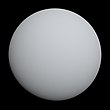|
エリダヌス座q1星(エリダヌスざq1せい、q1 Eridani、q1 Eri)あるいはHD 10647は、エリダヌス座の方向に約57光年の距離にある太陽型星である[1][3][注 1]。見かけの等級は5.52と、とても暗い夜空の下では肉眼でみることができる明るさである[2]。周囲には、少なくとも1つの太陽系外惑星と、星周円盤が発見されている[5][6]。
特徴
大きさの比較
| 太陽
|
エリダヌス座q1星
|

|

|
エリダヌス座q1星は、太陽よりもやや高温のF型主系列星で、スペクトル型はF8 VないしF9 Vと分類される[4][1]。質量と半径は、太陽より1割程度大きく、光度は太陽のおよそ1.4倍、金属量がほぼ太陽と同程度という太陽型星である[1][4]。年齢の見積もりには幅があり、3億年から48億年まで様々な値が求められ、その決定は問題となっている[4][7]。きょしちょう座・とけい座アソシエーション(英語版)と空間運動が共通していることから、若い見積もりを支持する向きもあるが、彩層活動、X線強度、自転速度などの観測結果は、10億年以上の年齢を支持しており、大体14億年くらいという値が採用されている[7][4][1]。
惑星系
エリダヌス座q1星の周りからは、少なくとも1つの太陽系外惑星が発見されている[8]。この惑星エリダヌス座q1星bあるいはHD 10647 bは、2003年6月のパリ天体物理学研究所の研究会で、ミシェル・マイヨールらによって初めて披露された[1]。エリダヌス座q1星bは、視線速度法によって存在を示唆されたが、この時点では視線速度曲線の精度が十分でなく、更なる観測が必要とされた[1]。そして3年後に、高い精度で軌道要素が求められ、その存在が確定した[5][1]。エリダヌス座q1星bは、質量が木星と同程度で、軌道長半径が2 au程度、離心率0.15の軌道を、989日周期で公転していると推定される[1]。
エリダヌス座q1星の視線速度曲線は、エリダヌス座q1星bがケプラー回転している影響だけを差し引いた残差がなお、誤差よりもやや大きい変化を示すため、別の惑星が存在する可能性も考えられている[1]。
エリダヌス座q1星は、赤外線天文衛星IRASによって遠赤外超過が検出されており、周囲に残骸円盤(英語版)が存在すると考えられた[9]。エリダヌス座q1星の残骸円盤は、恒星の光度に対する円盤の赤外線放射の相対光度が、太陽の近傍に位置する300の太陽型星の中で最も高い[6]。残骸円盤は、遠赤外線とサブミリ波、それから可視光の散乱光で空間的に分解され、円盤の大きさや質量が推定されている[6]。赤外線放射の大部分を担う円盤は、エリダヌス座q1星bの軌道よりはるか外側、中心星から34 auないし134 auの範囲に広がっており、含まれる塵の質量は、地球質量の数パーセントに及ぶとみられる[6][10]。画像からは、円盤は北東-南西方向に細長く伸びている様子がみられ、円盤を真横に近い向きからみている格好になる[6]。円盤には非対称性もみられ、エリダヌス座q1星bとは別の惑星による擾乱が起きた可能性もある[6]。
スピッツァー宇宙望遠鏡の赤外線分光器が観測した中間赤外スペクトルには、顕著な円盤の低温の塵の他に、温かい塵が存在する兆候もみられる[11][10]。温かい塵を含む円盤は、中心星から3 auないし10 auに分布していると予想される[10]。2成分の円盤構造は、エッジワース・カイパーベルトとメインベルトという太陽系の円盤構造と似ている[10]。
脚注
注釈
- ^ a b c パーセクは1 ÷ 年周視差(秒)より計算、光年は1÷年周視差(秒)×3.2615638より計算
出典
- ^ a b c d e f g h i j k l m n o p q r s t u Marmier, M.; et al. (2013-03), “The CORALIE survey for southern extrasolar planets XVII. New and updated long period and massive planets”, Astronomy & Astrophysics 551: A90, Bibcode: 2013A&A...551A..90M, doi:10.1051/0004-6361/201219639
- ^ a b c d ESA (1997), The HIPPARCOS and TYCHO catalogues. Astrometric and photometric star catalogues derived from the ESA HIPPARCOS Space Astrometry Mission, ESA SP Series, 1200, Noordwijk, Netherlands: ESA Publications Division, Bibcode: 1997ESASP1200.....E, ISBN 9290923997
- ^ a b c d e f g h “q01 Eri -- High Proper Motion Star”. SIMBAD. CDS. 2023年10月12日閲覧。
- ^ a b c d e Liseau, R.; et al. (2008-03), “q1 Eridani: a solar-type star with a planet and a dust belt”, Astronomy & Astrophysics 480 (3): L47-L50, Bibcode: 2008A&A...480L..47L, doi:10.1051/0004-6361:20079276
- ^ a b Butler, R. P.; et al. (2006-07), “Catalog of Nearby Exoplanets”, Astrophysical Journal 646 (1): 505-522, Bibcode: 2006ApJ...646..505B, doi:10.1086/504701
- ^ a b c d e f g Lovell, J. B.; et al. (2021-09), “High-resolution ALMA and HST images of q1 Eri: An asymmetric debris disc with an eccentric Jupiter”, Monthly Notices of the Royal Astronomical Society 506 (2): 1978-2001, Bibcode: 2021MNRAS.506.1978L, doi:10.1093/mnras/stab1678
- ^ a b Lawler, S. M.; et al. (2009-11), “Explorations Beyond the Snow Line: Spitzer/IRS Spectra of Debris Disks Around Solar-type Stars”, Astrophysical Journal 705 (1): 89-111, Bibcode: 2009ApJ...705...89L, doi:10.1088/0004-637X/705/1/89
- ^ Liseau, R.; et al. (2010-07), “Resolving the cold debris disc around a planet-hosting star . PACS photometric imaging observations of q1 Eridani (HD 10647, HR 506)”, Astronomy & Astrophysics 518: L132, Bibcode: 2010A&A...518L.132L, doi:10.1051/0004-6361/201014601
- ^ Zuckerman, B.; Song, Inseok (2004-03), “Dusty Debris Disks as Signposts of Planets: Implications for Spitzer Space Telescope”, Astrophysical Journal 603 (2): 738-743, Bibcode: 2004ApJ...603..738Z, doi:10.1086/381700
- ^ a b c d e Schüppler, Christian; et al. (2016-09), “Origin and evolution of two-component debris discs and an application to the q1 Eridani system”, Monthly Notices of the Royal Astronomical Society 461 (2): 2146-2154, Bibcode: 2016MNRAS.461.2146S, doi:10.1093/mnras/stw1456
- ^ Chen, C. H.; et al. (2006-09), “Spitzer IRS Spectroscopy of IRAS-discovered Debris Disks”, Astrophysical Journal Supplement Series 166 (1): 351-377, Bibcode: 2006ApJS..166..351C, doi:10.1086/505751
関連項目
外部リンク
座標:  01h 42m 29.3145176952s, −53° 44′ 26.991453264″ 01h 42m 29.3145176952s, −53° 44′ 26.991453264″
|


